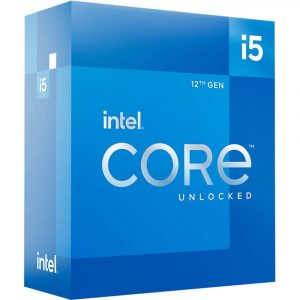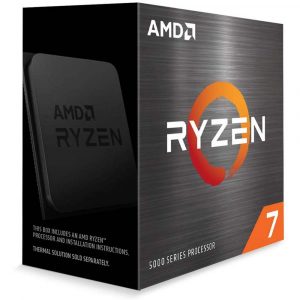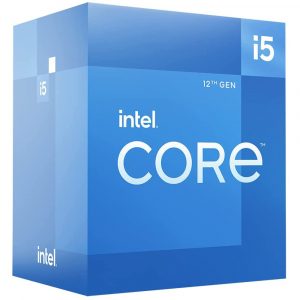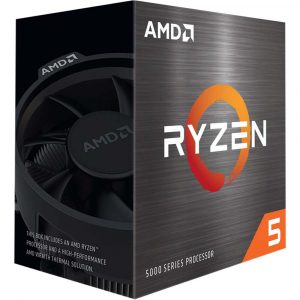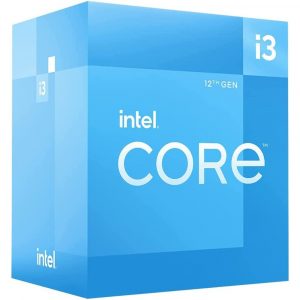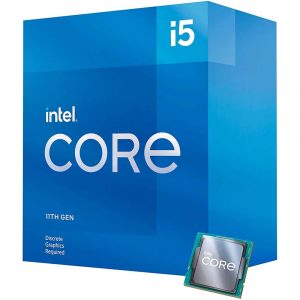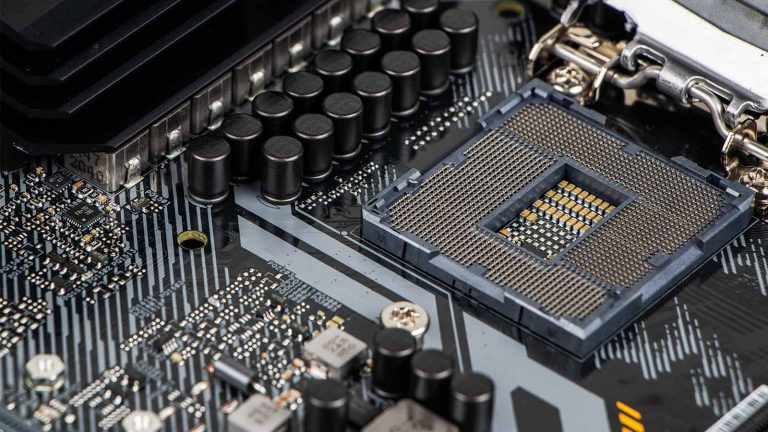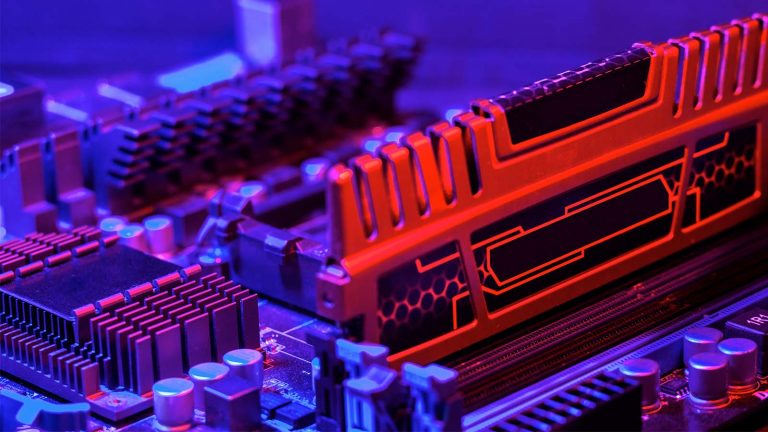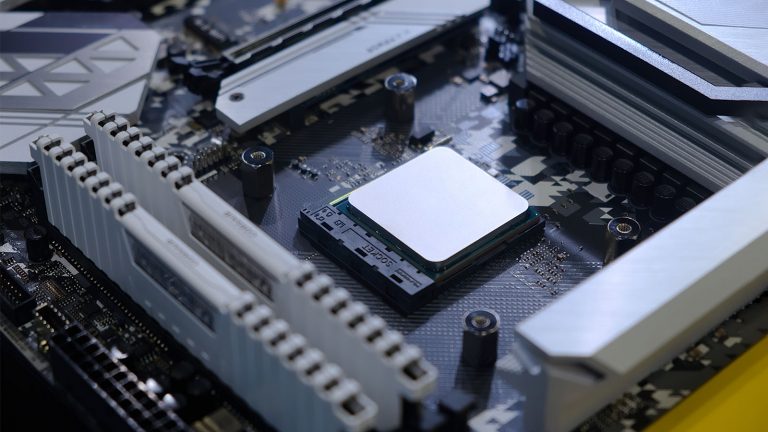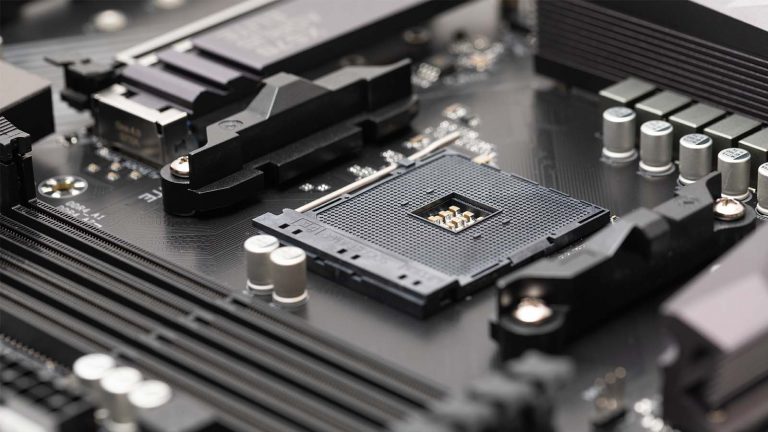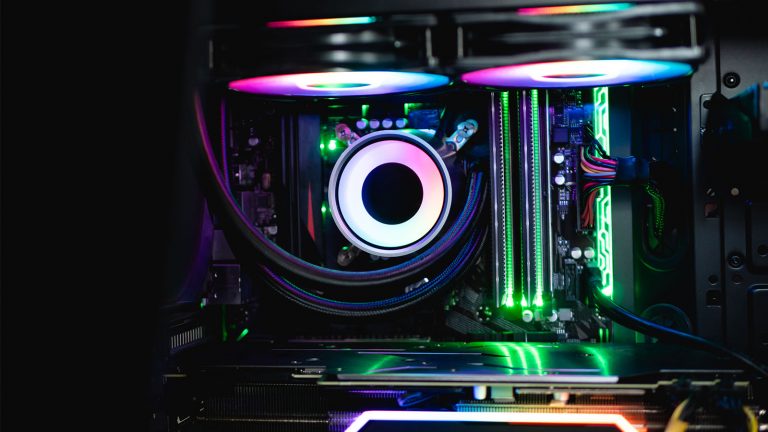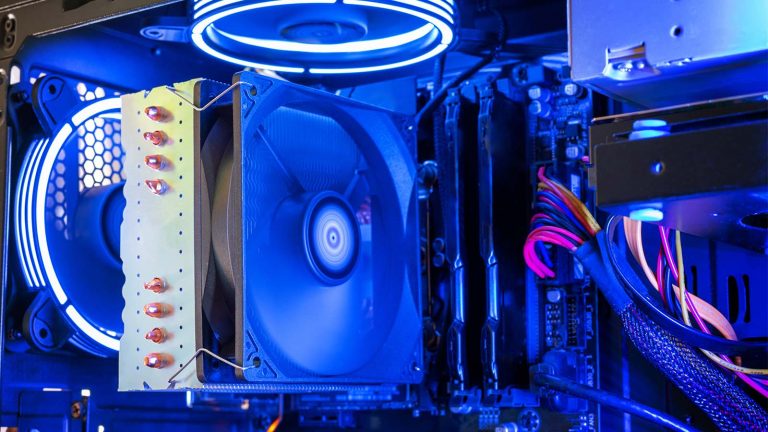6 Best CPUs for Radeon RX 6500 XT in 2025
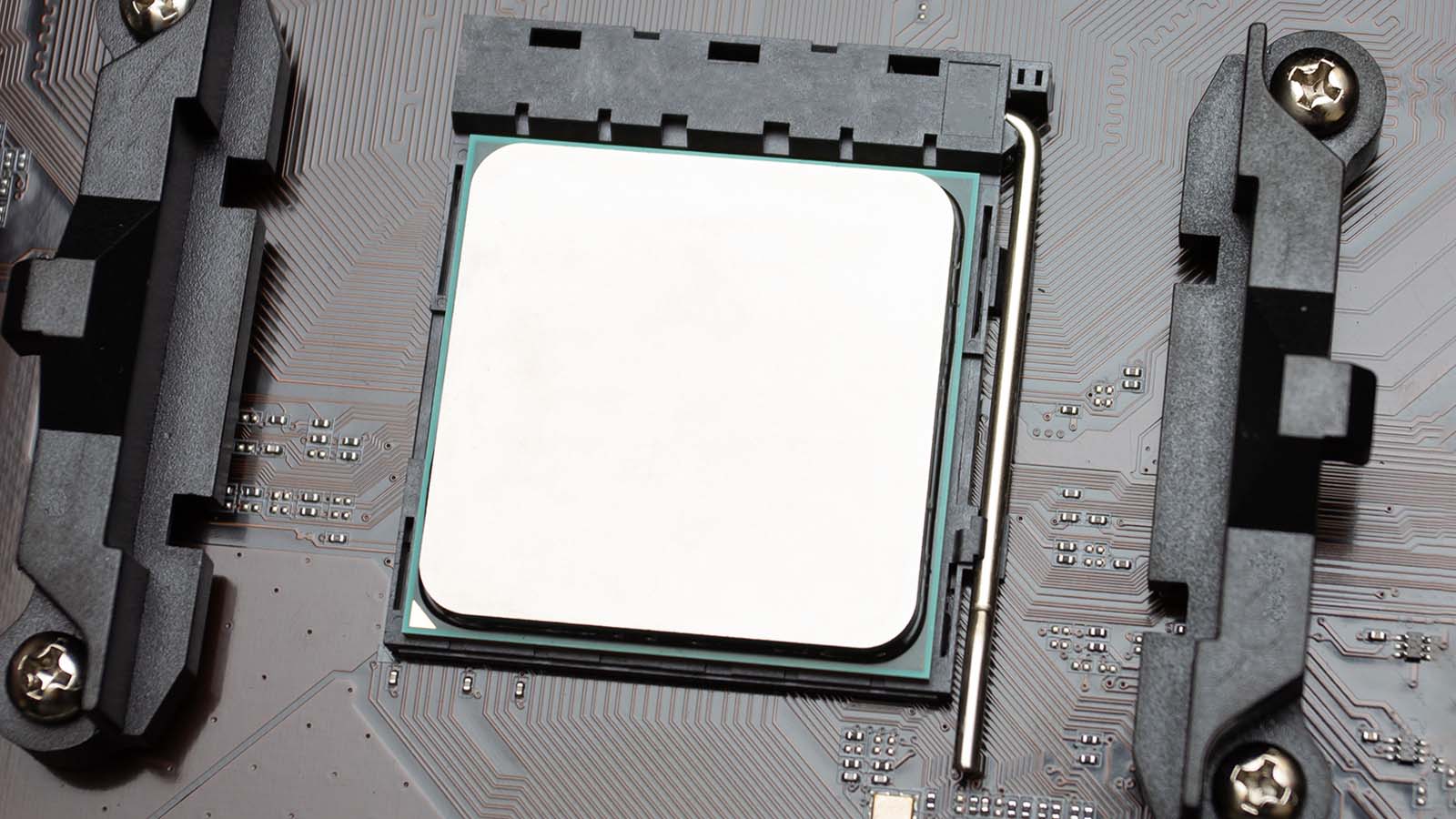
Getting your hands on any new GPU today is tough, and doing so at MSRP might as well be a pipe dream. Settling for a card that’s less attractive to miners and scalpers until the crisis blows over is a bright idea, one on which AMD hopes to bank on with its newest GPU. The RX 6500 XT is technically affordable and does well enough for 1080p gaming. Finding the best CPU for Radeon RX 6500 XT isn’t as challenging as finding it or any other card at a reasonable price. Still, we’re here to help you get the most optimum pairing for your needs.
Best High-End Intel CPU for Radeon RX 6500 XT: Intel Core i5-12600K
Best High-End AMD CPU for Radeon RX 6500 XT: AMD Ryzen 7 5800X
Best Mid-Range Intel CPU for Radeon RX 6500 XT: Intel Core i5-12400
Best Mid-range AMD CPU for Radeon RX 6500 XT: AMD Ryzen 5 5600X
Best Budget CPU for Radeon RX 6500 XT: Intel Core i3-12100F
Best Value CPU for Radeon RX 6500 XT: Intel Core i5-11400F
Best High-End Intel CPU for Radeon RX 6500 XT: Intel Core i5-12600K
The 12600K is an excellent example of how healthy competition benefits all of us. It’s a mid-tier Intel chip from the new Alder Lake line, one that would have been stunted by a handful of single-threaded cores five years ago. Thanks to the advent of Ryzen, it’s evolved into a multithreaded beast capable of competing with all but the most expensive CPUs from its own generation. It might be a tad overkill for the RX 6500 XT. Still, the 12600K is an exceptional value and great for futureproofing otherwise.
Intel had to fundamentally restructure the Alder Lake architecture to put out something capable of surpassing Zen3. That’s why the top three K processors have a new die design that incorporates two types of cores. P or performance cores take center stage. They have an almost 30% IPC increase over the cores Intel used for several prior generations.
These cores share the die space with efficiency or E-cores. The latter perform on par with older Skylake cores but are much more power-efficient and take up only a quarter of the area. Two disparate core types called for the introduction of the Thread Director. This component identifies different kinds of tasks and assigns them to the appropriate core type. The Thread Director works best on Windows 11, making for a solid argument to upgrade.
The 12600K’s asymmetric design consists of 6+4 cores for a total of 10 cores and 12 threads. The base clock for its P-cores is 3.7GHz, and you can boost them to 4.9GHz. The E-cores start at 2.8GHz but can climb 800MHz more when boosted. Alder Lake sees a break with conventional TDP measurements. Intel switched over to base and maximum turbo values to better represent power consumption instead. They’re set at a hefty 125W and 150W, respectively. While it isn’t as fiery as the 12700K and 12900K, you’ll want to invest in a good aftermarket cooler to keep your CPU happy.
Versatility is the best thing about the 12600K. Its real-world performance is highly impressive for the price, especially for work-related and creative tasks. Whether you’re running physics simulations or rendering graphics, only much more expensive Alder Lake and top-tier Ryzen CPUs have a lead. Its supremacy is even more decisive when it comes to 1080p gaming as only the other two K chips are better.
Best High-End AMD CPU for Radeon RX 6500 XT: AMD Ryzen 7 5800X
The third generation of Ryzen desktop CPUs continues AMD’s promise of regular disruptive CPU releases. Its CPUs were the undisputed performance champs before Alder Lake rolled out, but the line had one serious flaw. AMD chose not to grace us with lower-end Zen3 chips. With only four high-performance chips to draw on, our high-end pick is a bit of a mismatch for the 6500 XT. Still, the 5800X will serve you well even once you upgrade the GPU.
At first glance, it might have made more sense to recommend a less expensive CPU like the 5700G, given the card’s price and performance. However, the 5700G operates on PCIe 3.0. That would significantly hamper the 6500 XT’s already meager stats since it uses only a fourth of the standard PCIe x16 lane.
The first Ryzen chips were groundbreaking, with each consecutive release improving upon the previous one’s every aspect. IPC gains were the most notable since Intel didn’t bother to introduce any until Rocket Lake. The generational shift to Zen3 achieved a significant 20% uplift and further reduced Ryzen chips’ dependency on memory clock speeds.
Rather than implement sweeping architectural changes, AMD focused on numerous minor improvements to streamline the 5800X’s capabilities. These include tweaks to the branch predictor, execution engine, and the load/store unit.
The 5800X is the generation’s prime gaming CPU. It has eight cores and twice as many threads. The base clock speed stands at 3.7GHz and can be boosted by a respectable 900MHz. The chip’s power TDP is a reasonable 105W. Better yet, the 5800X will work on existing AM4 boards as long as their chipset is newer than X370 or B350.
While it’s true that the 12600K does better in games, the difference in framerate is insignificant. Intel’s chip is more affordable but requires a newer motherboard, so the two are closer in terms of pricing even though the 12600K is less expensive on its own. Power consumption charts clearly favor AMD’s chip.
Best Mid-Range Intel CPU for Radeon RX 6500 XT: Intel Core i5-12400
Intel’s i5 range has always had mass-market appeal, but the 12400 takes it to another level. It’s competitively priced, keeps up with the 5600X no matter the workload, and exerts much less thermal stress on your system than more powerful Alder Lake chips. This is the perfect CPU for carefree 1080p gaming with the 6500 XT and a fine component for 1440p if you decide to upgrade the graphics card down the line.
You could also save a few bucks by going with the 12400F. Its stats are identical to the 12400’s except for the lack of integrated graphics. It’s only worth it if you can find the F version at MSRP, though.
The top three Alder Lake CPUs understandably got the most attention and architectural improvements. However, each processor in the generation works with updated RAM and PCIe standards. That means you can pair the 12400 with either DDR4 or DDR5 RAM. It works with PCIe 4.0 GPUs and NVMe drives. Once PCIe 5.0 graphics cards become available, the 12400 will work with them too.
Mid and entry-level Alder Lake chips lack efficiency cores, relying entirely on performance cores instead. The die they’re built on is smaller since it doesn’t have to accommodate extra cores and the Thread Director. That leaves you with six hyperthreaded performance cores that got a 50% increase in L3 cache size compared to the 11400F.
Glancing at the 12400’s specs shows that its six cores and twelve threads operate at a base clock speed of 2.5GHz. The processor also receives the most significant boost on our list, a whopping 1.9 GHz. Its base power consumption of 65W is standard for this type of CPU. The thermal output isn’t large, so Intel bundles a stock cooler for maximum convenience. You could get better temps with an aftermarket solution, but that’s not strictly necessary.
The 12400 is a purpose-built mainstream gaming CPU. Even so, it doesn’t lag far behind AMD’s offerings in traditionally heavily multithreaded tasks. Media encoding is the only exception that proves the rule. The processor comes into its own while gaming. It will contribute a few frames less than the 5600X or 5800X. Still, it speaks volumes that the 12400 performs within an acceptable margin of error compared to a significantly more expensive gaming-focused chip from the opposition.
Best Mid-range AMD CPU for Radeon RX 6500 XT: AMD Ryzen 5 5600X
A fan favorite among mainstream gamers, the 5600X remains one of the most compelling CPU purchases today. It’s around $50 more expensive than the 12400 it competes against but makes up for the difference with greater availability and lower associated costs. A gaming-centric nature doesn’t prevent the chip from doing well in productivity tests, and a low TDP makes power consumption manageable.
There’s not much of a difference between the 5600X and the 5800X. Both run on the same kind of monolithic die that allows all cores to share the same L3 cache and communicate more efficiently. It is this efficiency increase that cuts down on lag, improving IPC and the chip’s single-core performance. That, in turn, has a noteworthy impact on framerate increases in games.
The 5600X has a considerably faster base clock speed than the 12400, 3.7GHz vs. 2.5GHz. Intel’s boost clock closes the gap, but the 5600X remains 200GHz faster. Their TDP is the same, 65W, with comparable power consumption as a result. The inclusion of a stock cooler is another similarity. You get the Wraith Stealth, a smaller cooler than the Wraith Prism that used to ship with mid-range Ryzen processors. Even so, thermals shouldn’t be problematic.
As you’d expect, the 5600X has the upper hand when tasked to stretch its multithreading muscle. It’s better at file encryption and compression than the 12400, which you should consider if you transfer large files a lot. Gaming performance remains in AMD’s favor. The lead is academic and inconsistent since some games see the 5600X win by a handful of frames while others turn the table with similar results from the 12400.
Best Budget CPU for Radeon RX 6500 XT: Intel Core i3-12100F
Even though it was released only recently, the RX 6500 XT’s price and performance suggest it’s an entry-level GPU. As such, it makes the most sense to pair it with an equally accessible processor, the 12100F. While it’s the weakest Alder Lake CPU, it’s among the most significant offerings if you take generational upgrades into account. The processor is cheap, performs exceptionally well for the price, and offers all the support for DDR5 and PCIe 5.0 its pricier siblings do.
Interestingly, the 12100F’s major “flaws” aren’t its fault. Intel didn’t count on it being so popular, so specimens are hard to find out in the wild. Price gouging is even worse – it should sell for a jaw-dropping $100, but the CPU was selling for $50 more at the time of writing.
Multithreading is now firmly established even in the lowest CPU segment. The 12100F only has four cores, but they’re all of the performance variety and have two threads each. They take up the same kind of H0 die as the 12400’s. As there are two fewer cores, the L3 cache shrinks to 12MB. That’s still double the 10100’s cache size, though.
The core clocks are similar to the 12400’s as well. They start with a base clock of 3.3GHz and can climb a whole 1 GHz higher at maximum boost. The 12100F has a meager power requirement of only 58W at a base level. It comes with the new & improved Intel stock cooler, which will prove more than adequate for the small amounts of heat the processor gives off.
All Alder Lake CPUs deserve recognition for pushing the envelope after a far too long hibernation period. However, we can’t help but be the most impressed with 12th-gen’s lowest entry. At MSRP, the 12100F is a phenomenal value. Its 1080p gaming prowess matches the Ryzen 3600X and is inconsequentially lower than that of the venerable i7-10700K! The performance cores are really pulling their weight while generating next to no heat. Not even tasks like image & video editing are beyond the CPU’s capabilities.
Best Value CPU for Radeon RX 6500 XT: Intel Core i5-11400F
Intel introduces new CPU platforms every two generations, and Alder Lake marks a shift to the LGA1700 standard. Pairing the RX 6500 XT with a B660 board makes the most sense, but availability can be scarce, and pricing is all over the place. You could go with the 12100F and wait to see if you can secure a good deal, or go the tried & true route and choose a Rocket Lake chip instead. You could do far worse than going with the 11400F, the shining star borne from an otherwise forgettable and lackluster Intel CPU line.
The i5-11600K is a tempting alternative if you don’t want to invest in a new generation of motherboards and can stretch your budget by an additional $50.
Increasing clock speeds with next to no architectural changes had been Intel’s MO for the better part of a decade. Ryzen’s steady gains made the need for a change abundantly clear, so Rocket Lake was the first generation in a while to switch to a different form of gains – IPC improvements. Intel accomplished this by introducing the hybrid Cypress Cove architecture, which took the lessons learned designing 11th-gen mobile processors and used them to supercharge the ancient 14nm production process.
What resulted was a 10% increase in IPC and even greater enhancements for chips with integrated graphics. The 11400F lacks a Xe graphics chip and is cheaper as a result. You’re not missing out since even an entry-level card like the RX 6500 XT is a significant improvement. Still, users who depended on iGPUs before noticed a significant framerate increase.
Stats-wise, the 11400F seemingly shares much with its successor. It has the same 6/12 core count and a 100MHz bump in its core frequency. The L3 cache stands at only 12MB, while the TDP – and we can call it that in the case of Rocket Lake – sits at 65W. Intel provides one of their older coolers. It’s not the best, but it’s good enough to keep the CPU from overheating even if you’re running demanding artificial tests.
The 11400F sits just below the 12100F for 1080p gaming results. Keep in mind that getting the most out of the newer chip also means purchasing a great mobo and DDR5, so the gap is even smaller. Office and productivity tasks see the 11400F pulling ahead of its 10th-gen counterpart. Its results are comparable to the 12100F’s otherwise.
Frequently Asked Questions
Does the RX 6500 XT have ray tracing?
Yes, the RX 6500 XT is the weakest GPU to date to include real-time ray tracing. Sadly, that’s a feature you’ll want to skip since it has a huge impact on the card’s already lackluster performance. Many games don’t even want to run on this card with ray tracing on. Others become unplayable since the card suffers from massive frame drops compared to standard settings. These drops can reach as high as 75% in some titles, making the RX 6500 XT unviable for ray tracing.
Which AMD CPU is best for RX 6500 XT?
Ironically, AMD’s own CPUs aren’t ideally suited to the RX 6500 XT at the moment. As stated above, Zen3 lacks appropriately weak processors, and the 3XXX series is both old and inappropriately priced. That leaves us with the first two 5XXX series chips. It makes more sense to go with the 5600X due to its lower price. However, the 5800X is a solid choice if you plan on using the RX 6500 XT as a stopgap card.
What is the RX 6500 XT equivalent to?
According to Techpowerup’s comprehensive testing, the RX 6500 XT slots between NVidia’s GTX 1650 Super and the RX 5500 XT. All three cards have 4GB of VRAM. The newer AMD card is slightly worse off than the older one since it uses 64-bit memory. Buying the RX 6500 XT will let you play games at acceptable framerates in 1080p and not much else. Given the times, that’s all some people may need to tide them over.

